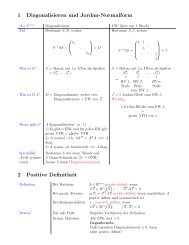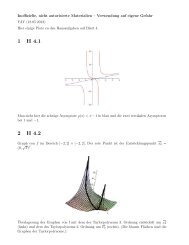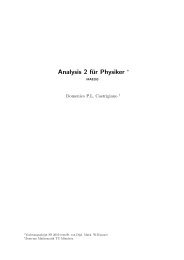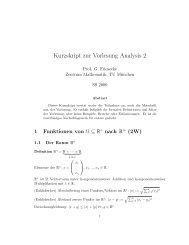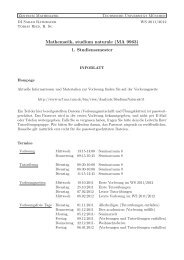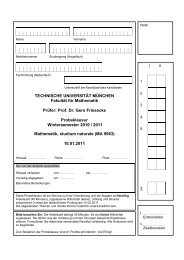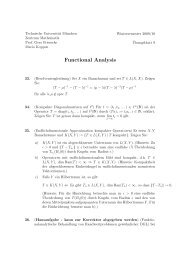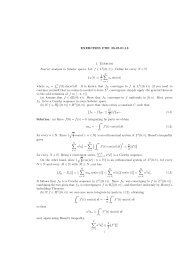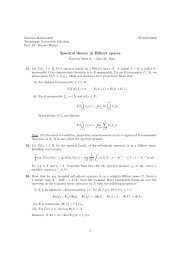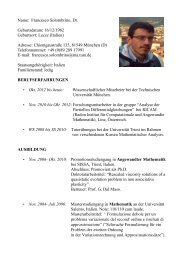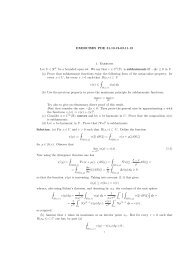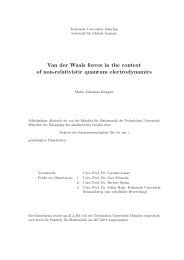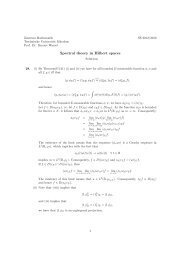Weak Convergence Methods for Nonlinear Partial Differential ...
Weak Convergence Methods for Nonlinear Partial Differential ...
Weak Convergence Methods for Nonlinear Partial Differential ...
Erfolgreiche ePaper selbst erstellen
Machen Sie aus Ihren PDF Publikationen ein blätterbares Flipbook mit unserer einzigartigen Google optimierten e-Paper Software.
Chapter 1<br />
Introduction<br />
Writing a general partial differential equation (PDE <strong>for</strong> short) as<br />
A(u) = f, (1.1)<br />
where A is a (nonlinear) partial differential operator (PDO), one is often interested<br />
in solving a appropriate approximate problem<br />
A ε (u ε ) = f ε , (1.2)<br />
This way one hopes, e.g., if it is too hard to show that (1.1) does have solutions,<br />
to first solve the easier problem (1.2) and then find a solution of (1.1) in the<br />
limit ε ց 0. Another motivation is dictated by numerics: In order to solve (1.1)<br />
numerically, one needs to discretize the equation, thus arriving at an approximate<br />
problem of the <strong>for</strong>m (1.2). But also the reverse point of view is interesting in<br />
applications. Many (physical) systems involve some small parameter (or scale)<br />
ε. Then (1.2) desribes a complicated system which we would like to approximate<br />
by a simpler equation of the <strong>for</strong>m (1.1) <strong>for</strong> small ε.<br />
In any case, the main task is to show that solutions u ε of (1.2) do converge<br />
to solutions u of (1.1), possibly up to extracting subsequences. Now typically<br />
one does not have much knowledge about the sequence (u ε ). In particular, if k<br />
is a PDO of order k, there is no hope that (u ε ) converges strongly in C k or W k,p<br />
at all! However, suitable a priori estimates may guarantee at least that (u ε ) is<br />
bounded and so—up to subsequences—weakly convergent to some function u.<br />
Now the notion of weak convergence is taylored so as to give convergent<br />
quantityies under linear operations. Ususally, if (u ε ) converges to u weakly (write<br />
u ε ⇀ u) and A is nonlinear, one cannot deduce that A(u ε ) ⇀ A(u), let alone<br />
A ε (u ε ) ⇀ A(u). In order to succeed we will there<strong>for</strong>e have to use the only<br />
available piece of in<strong>for</strong>mation, namely, that u ε solves the PDE (1.2), in a crucial<br />
way. The core theme of this course will be how this fact ‘compensates’ <strong>for</strong> the<br />
lack of strong compactness of (u ε ).<br />
In this sense, we are basically investigating weak continuity properties of<br />
nonlinear operations on function spaces. A strongly related question arises in<br />
3



